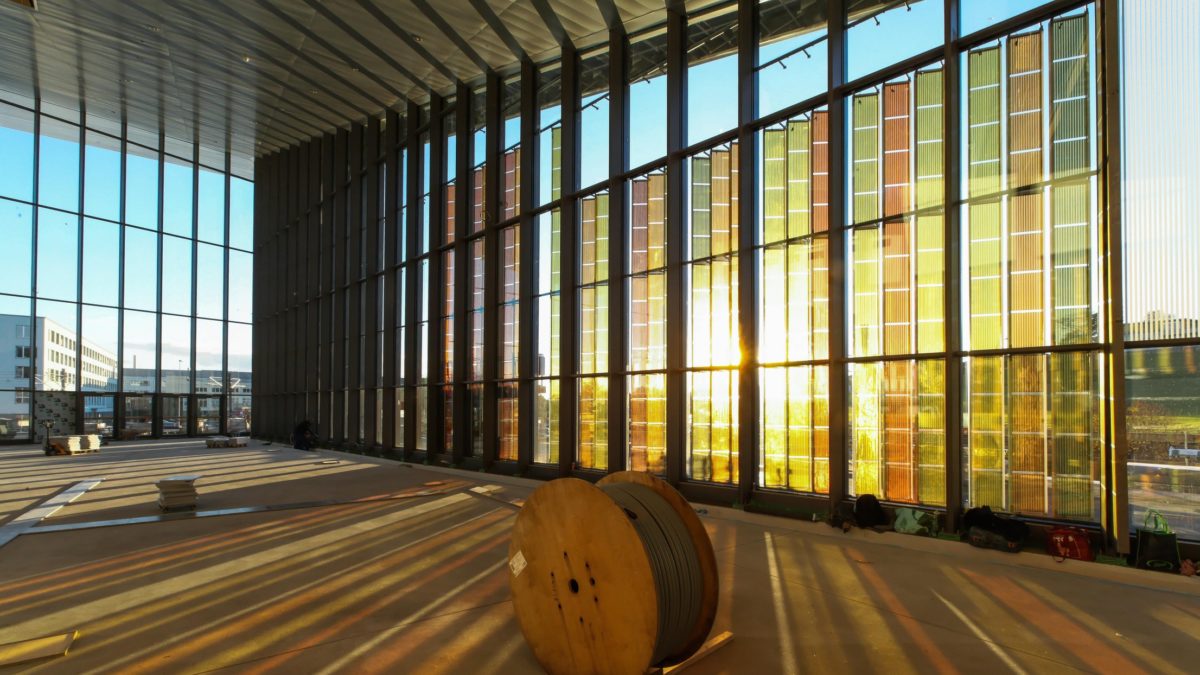The history of mesoscopic dye-sensitized solar cells (DSCs) dates back to the 1990s, when they were demonstrated by Brian O'Regan and Michael Grätzel at Switzerland’s École polytechnique fédérale de Lausanne (EPFL). Since then they have been commonly known as “Grätzel cells,” and this week a group of scientists led by Grätzel announced a new breakthrough.
The group fabricated dye-sensitized solar cells with greater than 15% efficiency under direct sunlight, and achieved efficiencies of up to 30% under varying ambient light conditions. The scientists described the cells in “Hydroxamic acid preadsorption raises efficiency of cosensitized solar cells,” which was recently published in Nature.
In an accompanying press release, the group explained that dye-sensitized solar cells convert light into electricity through photosensitizers. These dye compounds absorb light and inject electrons into an array of oxide nanocrystals, which are then collected as electric current. The photosensitizers are attached to the surface of nanocrystalline mesoporous titanium dioxide films, which are saturated with redox-active electrolytes or a solid charge-transport material. The entire design aims to generate electric current by moving electrons from the photosensitizer to an electrical output such as a device or storage unit.
The latest achievement comes down to advancements in the photosensitizers and other components, said the researchers. The key to improving efficiency lies in understanding and controlling the arrangement of dye molecules on the surface of titanium dioxide nanoparticle films that favor the generation of electric charge, they added. One method is cosensitization, a chemical manufacturing approach that produces the solar cells with two or more different dyes that have complementary optical absorption.
Dye combinations
The EPFL used this approach to achieve the new efficiency record, taking advantage of the combined dyes to develop a cell that can absorb a larger portion of the light spectrum. Finding the right combination of dyes that can achieve high light absorption and conversion efficiency was the key challenge for the group, requiring a lengthy process of molecular design, synthesis and screening.
Popular content
The group, led by Grätzel and fellow scientist Anders Hagfeldt, succeeded in improving the combination of two newly developed photosensitizer dye molecules, by developing a technique in which a monolayer of a hydroxamic acid derivative is pre-adsorbed onto the surface of nanocrystalline mesoporous titanium dioxide. This slows the adsorption of the two sensitizers and enables the formation of a well-ordered and densely packed sensitizer layer on the titanium dioxide surface.
Using this approach, the EPFL researchers demonstrated dye-sensitized solar cells with an efficiency of 15.2% under standard “one sun” illumination – the first time this technology has passed the 15% mark. The cells also demonstrated operational stability in more than 500 hours of testing. And testing the cells over a wide range of different light intensities revealed increased performance under ambient light conditions – up to a maximum of 30.2% efficiency.
The dye-sensitized solar cells are transparent and can easily be manufactured in a variety of colors. Typical applications include skylights, greenhouses or glass facades. Because they are lightweight and flexible, they are also suitable for use in portable electronic devices.
“Our findings pave the way for facile access to high performance DSCs and offer promising prospects for applications as power supply and battery replacement for low-power electronic devices that use ambient light as their energy source,” said the EPFL researchers.
This content is protected by copyright and may not be reused. If you want to cooperate with us and would like to reuse some of our content, please contact: editors@pv-magazine.com.



1 comment
By submitting this form you agree to pv magazine using your data for the purposes of publishing your comment.
Your personal data will only be disclosed or otherwise transmitted to third parties for the purposes of spam filtering or if this is necessary for technical maintenance of the website. Any other transfer to third parties will not take place unless this is justified on the basis of applicable data protection regulations or if pv magazine is legally obliged to do so.
You may revoke this consent at any time with effect for the future, in which case your personal data will be deleted immediately. Otherwise, your data will be deleted if pv magazine has processed your request or the purpose of data storage is fulfilled.
Further information on data privacy can be found in our Data Protection Policy.